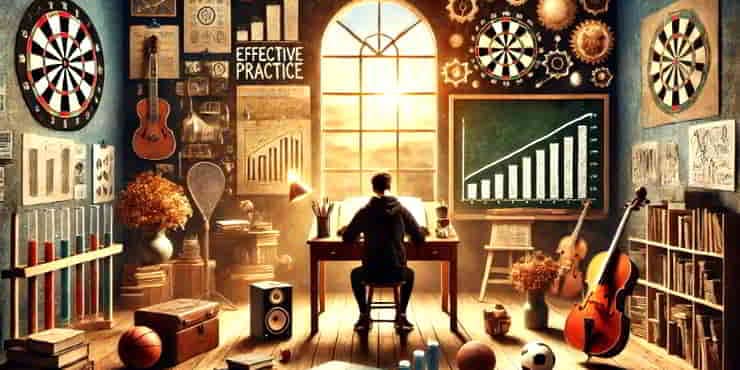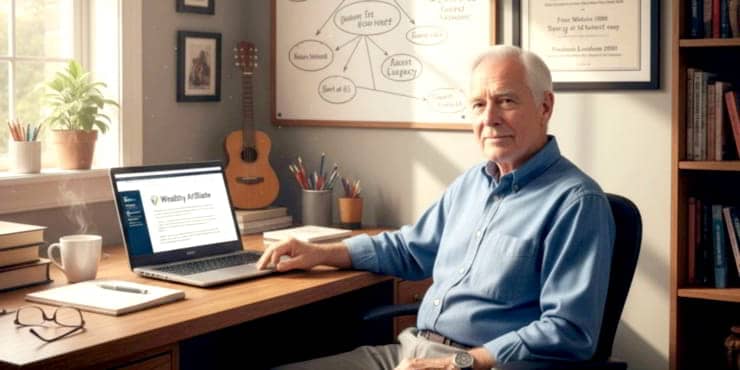How to Master Any Skill: Frameworks for Faster Learning

Estimated reading time: 5 Min
Want to level up faster? Learn the mental models and learning loops behind mastering new skills efficiently and with purpose.
“Practice makes perfect.”
We’ve all heard it, and many of us have clung to it when striving to improve.
But is it really true?
Vince Lombardi claimed that only “perfect practice makes perfect.”
Is that really true?
I’d say that’s a catch 22; You can only perform perfect practice if yu’ve already achieved perfection!
The truth about “practice makes perfect” is that perfection is a myth while continuous progress towards perfection is the key.
Ask a master!
The thing is that without feedback and thoughtful adjustments, practice often leads to frustration rather than perfection or mastery.
In this post, we’ll explore why practice alone isn’t enough and what you need to do to turn repetition into real progress.
Whether you’re learning a skill, building a habit, or aiming for excellence in your work, understanding how to practice effectively can make all the difference.
What Is Practice?
At its core, practice means deliberately repeating an action with the aim of improving.
But not all practice is created equal. Mindless repetition can reinforce bad habits, while purposeful practice focuses on identifying weaknesses and making incremental improvements.
Imagine someone learning the guitar.
If they play the same chord progression incorrectly every time, they’re practising—but they’re also ingraining the wrong technique.
Without a system to correct mistakes, practice becomes counterproductive.
The Problem with “Perfect”
Before diving deeper, let’s address the elephant in the room: the idea of perfection.
Aiming for “perfect” often sets an unrealistic standard, leading to disappointment.
Skills, whether in sports, music, or business, aren’t about flawless execution but continuous improvement.
Instead of chasing perfection, aim for mastery—being competent, adaptable, and consistent over time.
The Feedback Loop
Feedback is essential in any kind of learning!
Feedback is like a mirror, showing you where you excel and where you fall short.
A feedback loop involves:
- Input
Trying something out, like a new writing technique. - Action
Implementing it during practice. - Review
Evaluating the results and the activities that got you there (self-assessment or external input). - Adjust
Making changes based on what you’ve learned.
For example, a golfer may record their swing, review the video, and tweak their posture for the next attempt.
This process of trying, reviewing, and refining is what transforms practice into progress.
Types of Feedback
- Self-Assessment
Self-awareness is a powerful tool. Recording yourself, keeping notes, or reviewing your own work critically can highlight areas for improvement. Example: A writer might read their work aloud to spot clunky sentences or inconsistencies. - External Feedback
Coaches, mentors, or peers can offer fresh perspectives you might miss. Their experience allows them to pinpoint issues and suggest solutions. Example: A violin teacher notices a subtle wrist movement that a student wouldn’t detect on their own. - Useful Questions
The answers to the following questions will provide all the feedback you need:- What worked?
- What didn’t work?
- What did you learn?
- What would you do differently next time?
The Value of Mistakes
Mistakes aren’t failures; they’re signposts pointing you toward areas for growth.
They are simply another form of feedback.
Treat them as opportunities rather than setbacks.
If you hit a wrong note or misstep during a presentation, analyse what went wrong and use it as a stepping stone for improvement.
Why Guidance Matters
While self-coaching is valuable, timely external guidance often accelerates progress.
The Role of a Teacher, Coach, or Mentor
Teachers and mentors provide targeted advice, hold you accountable, and inspire you to keep pushing your limits.
Example: A running coach can spot inefficiencies in your stride that you’d never notice and suggest exercises to fix them.
Creativity in Self-Coaching
If you don’t have access to a coach, don’t worry. A creative approach can help. Experiment with different techniques, use tools like apps or online resources, and seek feedback from friends or colleagues.
Practical Tips for Self-Coaching:
- Record your performance and analyse it critically.
- Compare your work to established benchmarks (e.g., a professional musician’s performance or a well-written blog post).
- Set challenges to push yourself out of your comfort zone.
The Danger of Mindless Practice
Repetition alone doesn’t guarantee improvement.
Practising the same flawed technique only cements bad habits.
The key is to identify and correct mistakes as you go.
Example: A swimmer repeatedly practising a poor breathing technique might end up slower and more fatigued.
The Importance of Goals
Effective practice begins with clear goals. Vague aspirations like “get better at guitar” don’t provide enough direction. Instead, use SMART goals:
- Specific
Learn to play three songs smoothly. - Measurable
Play at full speed without mistakes. - Achievable
Choose songs within your skill level. - Relevant
Align with your broader musical goals. - Time-bound
Achieve this within two weeks.
A Holistic Approach to Practice
The sweet spot lies in integrating structured feedback with purposeful guidance.
This iterative process—practice, feedback, adjust—creates a cycle of continuous improvement.
Example: A business presenter records themselves rehearsing, gets feedback from a coach, then refines their delivery. Each cycle brings them closer to mastery.
Patience and Persistence
Improvement takes time.
There’s no overnight success; even the most talented individuals invest hours into their craft.
Be patient with yourself and embrace the journey of small, consistent progress.
FAQs: Master Any Skill
Does practicing every day guarantee improvement?
No. Daily practice helps, but without feedback, you risk repeating mistakes. Focus on quality over quantity.
How can I give myself feedback if I don’t have a teacher?
Use tools like video or audio recordings to review your performance. Compare your work to high-quality examples and look for discrepancies.
Do I need to set goals to improve?
Yes. Goals give you direction and a way to measure progress. Without them, you may practise aimlessly.
What’s the best way to find a good coach or mentor?
Look for someone experienced, communicative, and aligned with your learning style. Seek recommendations from trusted sources.
How long does it take to see results from practice?
It depends on the skill and your approach. Consistent, feedback-driven practice typically shows results within weeks or months.
Summary
“Practice makes perfect” might be catchy, but it’s misleading.
Practice is the foundation, but feedback and guidance are the pillars that hold up the structure of eventual mastery.
Embrace mistakes, seek insights, and stay committed to the process.
You’re not aiming for perfection; you’re working toward being the best version of yourself.
Are you ready to transform the way you practice and start seeing real results?
Whether you’re honing a craft, learning a new skill, or striving for excellence in your work, don’t let your efforts go to waste.
Start applying feedback-driven practice today!
Have insights, tips, or questions about improving your practice?
Share them in the comments below, and let’s learn from each other.
If you found this post helpful, share it with someone who’s on their own journey to mastery!
😉
Richard


![Are Wealthy Affiliate Hubs Revolutionising Website & Content Development In [year]? A futuristic and sleek digital workspace designed for website management and content creation - Wealthy Affiliate Hubs](https://ml0yvzumdtic.i.optimole.com/cb:k6B_.1fa14/w:740/h:370/q:mauto/https://solobusinessmind.com/wp-content/uploads/2024/12/A-futuristic-and-sleek-digital-workspace-designed-for-website-management-and-content-creation-Wealthy-Affiliate-Hubs740x370-O.jpg)



